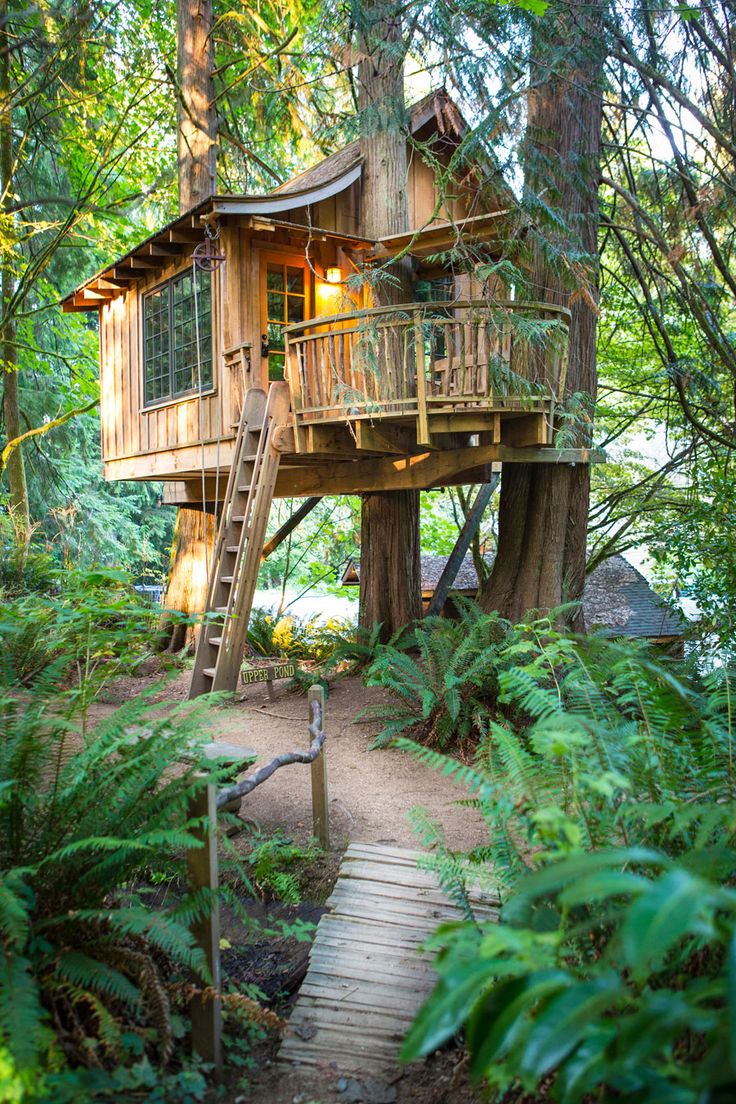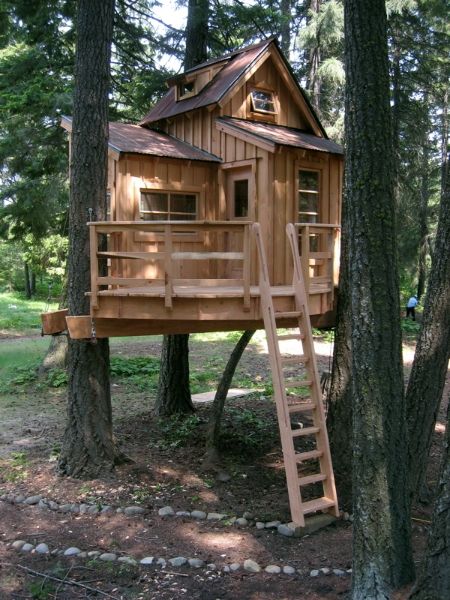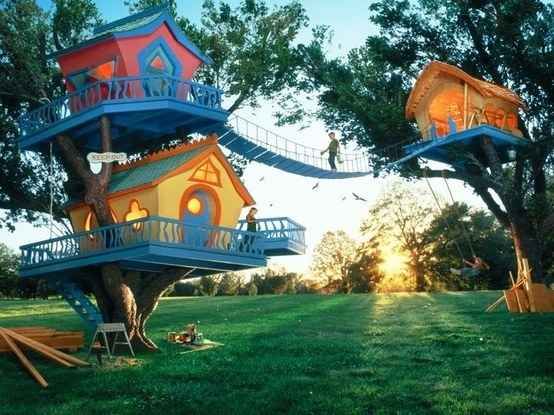5 Tips for Building Your Own Treehouse
A treehouse can be a special, magical hideaway or fort for almost any child. Whether it’s camping under the stars, playing make-believe, or simply enjoying the great outdoors, treehouses are ultimately the perfect idea for any child. Below are some tips from experienced builders that you should be sure to keep in mind when completing your project.
1. Choose the best tree. Choose a living, healthy, mature, and sturdy tree that is not too old or too young. For maximum support, you should look for a hardwood tree with branches at least 8-inches in diameter. If choosing a softwood tree, your branches should be even thicker than this. An ideal tree will have a strong, sturdy trunk and branches, roots that are deep and well-established, and no evidence of disease or parasites that will lead to future weakening of the tree. The most ideal trees for building treehouses include maple, oak, fir, beech, and hemlock. Even after choosing your tree, you may want to consider hiring an arborist to come and inspect your tree to be sure that there are no pests, parasites or anything that will cause your tree to be unfit for a treehouse.

2. Confirm with your local planning department and talk to your neighbors. It is very important to speak with your local planning department to learn about the local regulations or ordinances before building. For example, there may be height restrictions or a square-footage limit in your area. In addition, there may be certain trees on your property that are protected, or you may even need a permit to build your treehouse. As a courtesy, it is also a good idea to speak with your neighbors, prior to starting your project. Just let them know about your plans, and be open and communicative with them, especially if the treehouse is going to be visible to them or overlooking their property. Showing your neighbors this respect may help to make them more comfortable with your project, and may deter future complaints or issues.

3. Consider weight and stability. For smaller treehouses, you may be able to use a single-trunk construction approach. In this case, you would use one main trunk to build your main platform on. You would then use diagonal bracing beams to keep the treehouse level, supported, and sturdy. For larger, heavier treehouses on the other hand, you would want to spread the weight of your treehouse among several different trees, as this will allow it to withstand more weight and will keep it more stable.
4. Minimize tree damage.
- In order to account for and accommodate future tree growth, be sure to leave gaps around any trunks or branches that penetrate your treehouse. As a rule of thumb, allow a 2-inch gap around the tree if it passes through the treehouse floor, and a 3-inch gap if it passes through the treehouse roof.
- Do not constrict any part of the tree with rope, cable, or wire, as this can cut through the bark and eventually strangle the tree.
- Make as little punctures in the tree as possible, as too many of these may lead to unsafe disease and bacteria for the tree.
- Do not place fasteners too close together in the tree, as this can weaken that section of the tree. As another rule of thumb, use at least ¾-inch bolts spaced at least 18-inches apart vertically and 12-inches apart horizontally.

5. Do most of your building on the ground and then lift into position. As you can imagine, is much easier and safer to do the majority of your building on the ground. Complete the main sections of your treehouse on the ground, and then hoist them into position in the tree when they are complete. From here, you can finish the smaller, easier steps when your treehouse is up in the tree.
While a treehouse can be a special place for almost any child, building a treehouse can also be a fun and innovative project for any adult. Building a treehouse requires careful planning, consideration, preparation, and construction, but with the proper attention and care, your treehouse can remain your child’s special wooden sanctuary for years.




























































